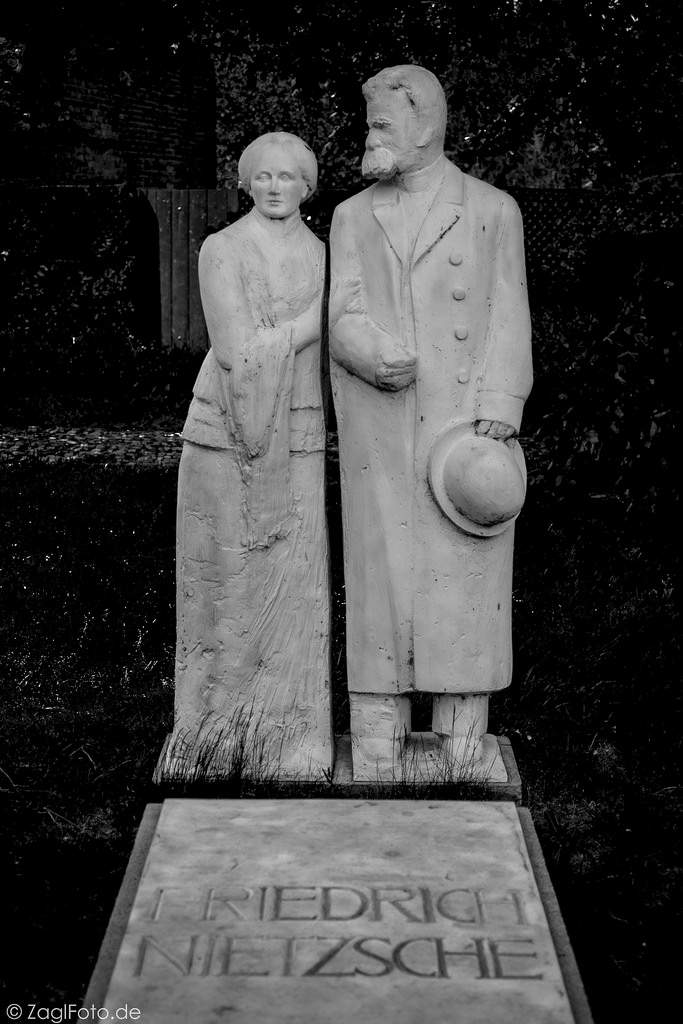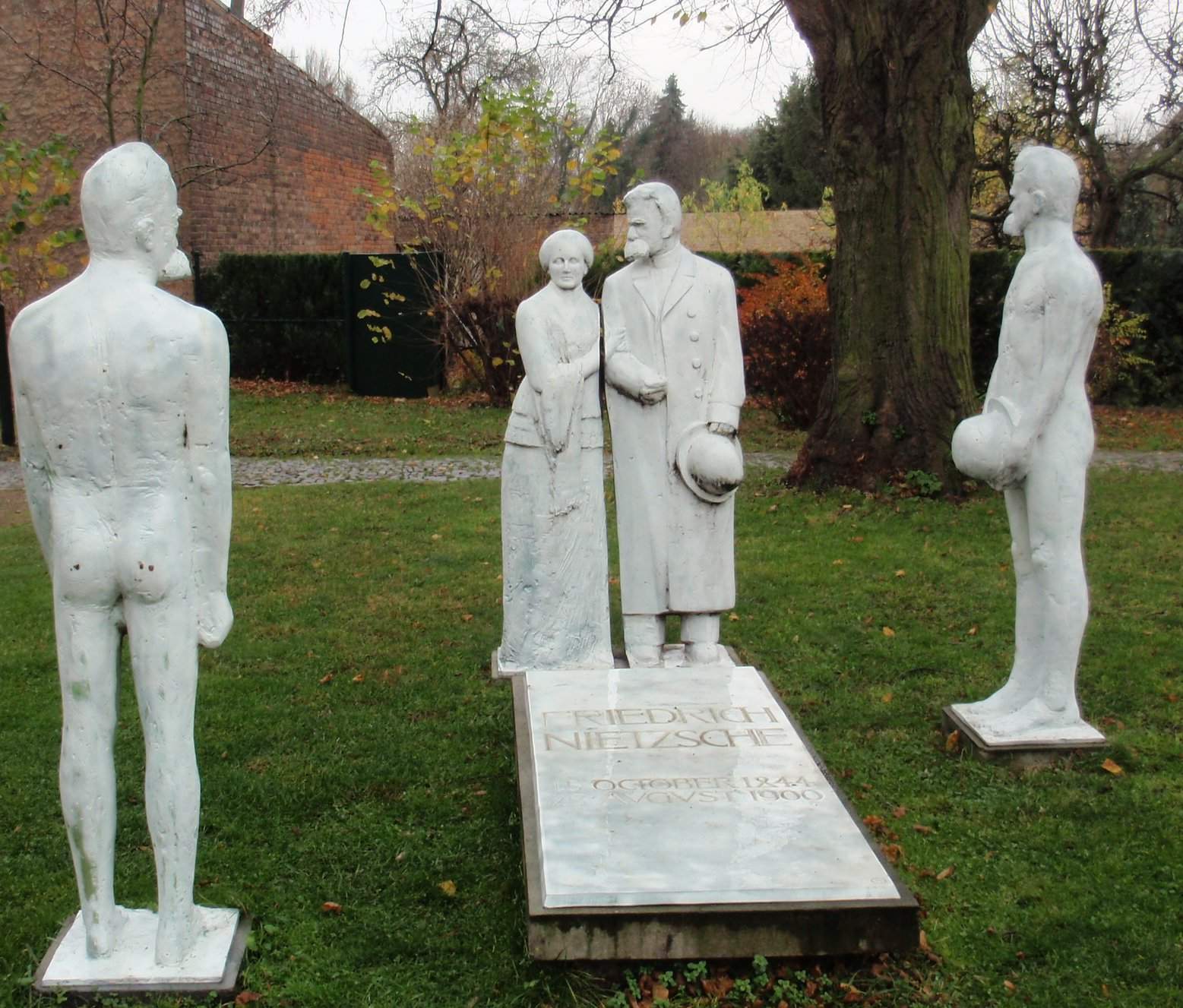I always enjoyed the dictum (favored by Hitchens) “What is asserted without evidence can be dismissed without evidence” – itself asserted without supporting argument. One of the great masters of the art of passionate, soaring, assertion was Friedrich Nietzsche.
Nietzsche comes to mind, today, because Jordan Peterson appears to have absorbed a form of Cliff’s Notes version of Nietzsche, as most of us did in college.
I am not sure why, but I decided I wondered what his tomb looked like.

But, there is more. It’s quite interesting. I love the reference to the hat. But I am not sure what it means, which makes it entirely appropriate.

[wikimedia commons] Das Röckener Bacchanal by Klaus Friedrich Messerschmidt

How to detect a Nietzsche Poseur: If they only reference “god is dead” or drop the term “ubermensch” they probably have not actually waded through anything more than a summary of his writings. Careers have been built on less. Instead of Cliff’s Notes I prefer Will Durant’s take on Nietzsche; also the Blackstone Audio classics of philosophy (Narrated by Charlton Heston!) are pretty good.

“He who fights with monsters should look to it that he himself does not become a monster. And if you gaze long into an abyss, the abyss also gazes into you.”
Nice aphorism. And, of course, the converse is implicit.
—
PS I like that second image.
Then, there’s the photograph of Lou Salome, Paul Ree, and Friedrich Nietzsche when they were still good friends.
John Morales@#1:
Then, there’s the photograph of Lou Salome, Paul Ree, and Friedrich Nietzsche when they were still good friends.
I always wonder if he was halfway mad when that was taken. Safranski’s biography [wc] makes it sound as though it was a last, desperate attempt to connect with humanity. Perhaps I am reading too much into it.
He who fights with monsters should look to it that he himself does not become a monster. And if you gaze long into an abyss, the abyss also gazes into you.
A long-time favorite. I think I quoted it in my book on homeland security, from back before we leapt into the abyss. But like many of his great one-liners, is it true? It sounds great but I am not so sure that it’s anything more than an unsupported assertion.
But he was right – he was dynamite – and he blew up the old order and made it impossible for religion to claim primacy in the domain of philosophy. I imagine a dinner party encounter between Nietzsche and Voltaire, but I am pretty sure Nietzsche’s temperament was too fragile – Voltaire would have probably poked him so hard he would have hidden under the table and never come out.
Your blog post gave no information about these rather unusual looking sculptures, so I had to look it up.
So, the title of this sculpture ensemble is “Röckener Bacchanal.” Translation: “Röcken” is the name of the village where Nietzsche was born and where these sculptures are located; “Bacchanal” is the same as in English.
Here: http://www.nietzsche-gedenkstaette.de/engl/memorial.html is more information about this place.
Anyway, Nietzsche is buried together with his family members next to the local church. His grave is rather plain looking. Here’s a photo: http://www.f-nietzsche.de/krug4.jpg
The Röcken Bacchanal is located in another place. It’s somewhat close to the grave, but not right next to it. The Röcken Bacchanal was inaugurated in 2000. Those are bronze sculptures with a white coating and they show Nietzsche three times at his own grave. The sculptor refers to a vision which Nietzsche described in a letter to his friend: “During this fall, and dressed with as little as possible, I attended my own funeral twice.”
Interpreting the phrase “dressed with as little as possible” as “naked” was the sculptor’s decision.
And this one https://www.researchgate.net/profile/Oliver_Bosch2/publication/259082039/figure/fig1/AS:392561777758211@1470605429274/Abb-1-Friedrich-Nietzsche-mit-seiner-Mutter-Franziska-Nietzsche-1892-in-Naumburg.png is a photo with Nietzsche and his mother. I guess you can tell how the sculptor used this photo as a reference.
Marcus,
Actually, a two-liner– a couplet. Obviously it’s not literal, and not something that can be either true or false.
I like it because I found it though-provoking, and I interpret it as a moral admonition.
First one I think is congruent to “the ends don’t justify the means”, a virtue ethics stand.
(Robespierre, anyone?)
Second one I think has echoes of “to know all is to forgive all”, but moreso I think the abyss refers to nihilism. There are no values or virtues other than those we mentally create, and truly contemplating this concept can weaken our will to hold to them and so yield to nihilism.
(He was all about will, IMO, and very much anti-authoritarian)
Hadn’t seen a rendition of ol’ Freddy’s face for quite a while.
Now I have to wonder if that ‘stache inspired John Bolton at an impressionable age.
Pierce R. Butler@#5:
Now I have to wonder if that ‘stache inspired John Bolton at an impressionable age.
That would be sad.
Nietzsche was the nineteenth-century version of Jordan Peterson.
polishsalami @ # 7 – Oh yeah?
Pls cite us a few JP zingers you think will still resonate a century from now.